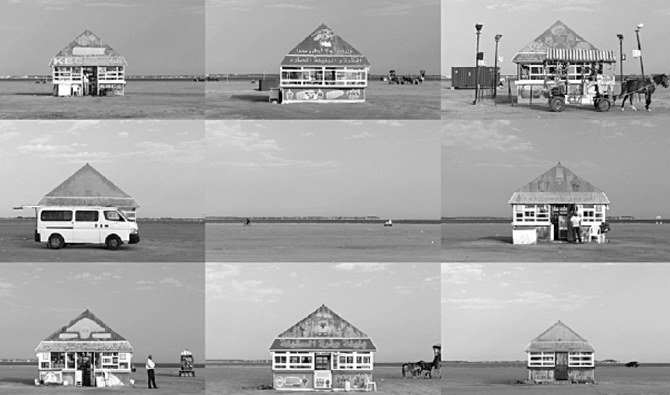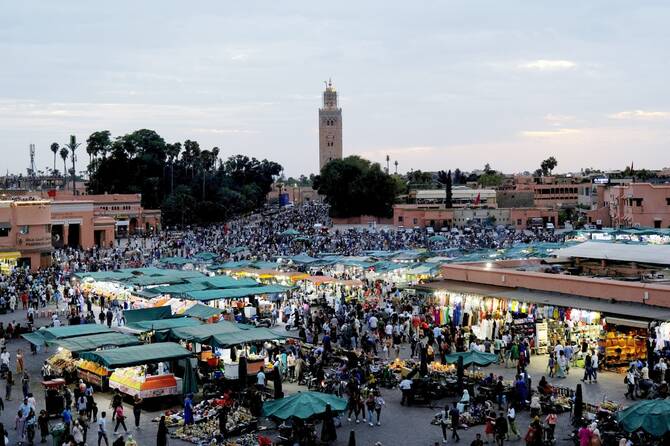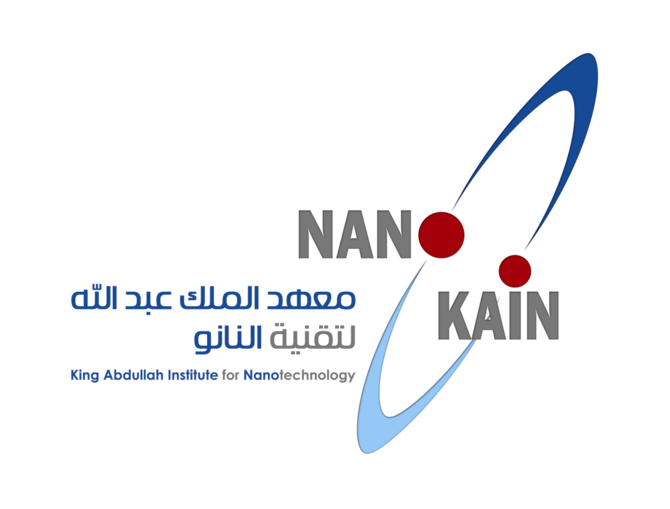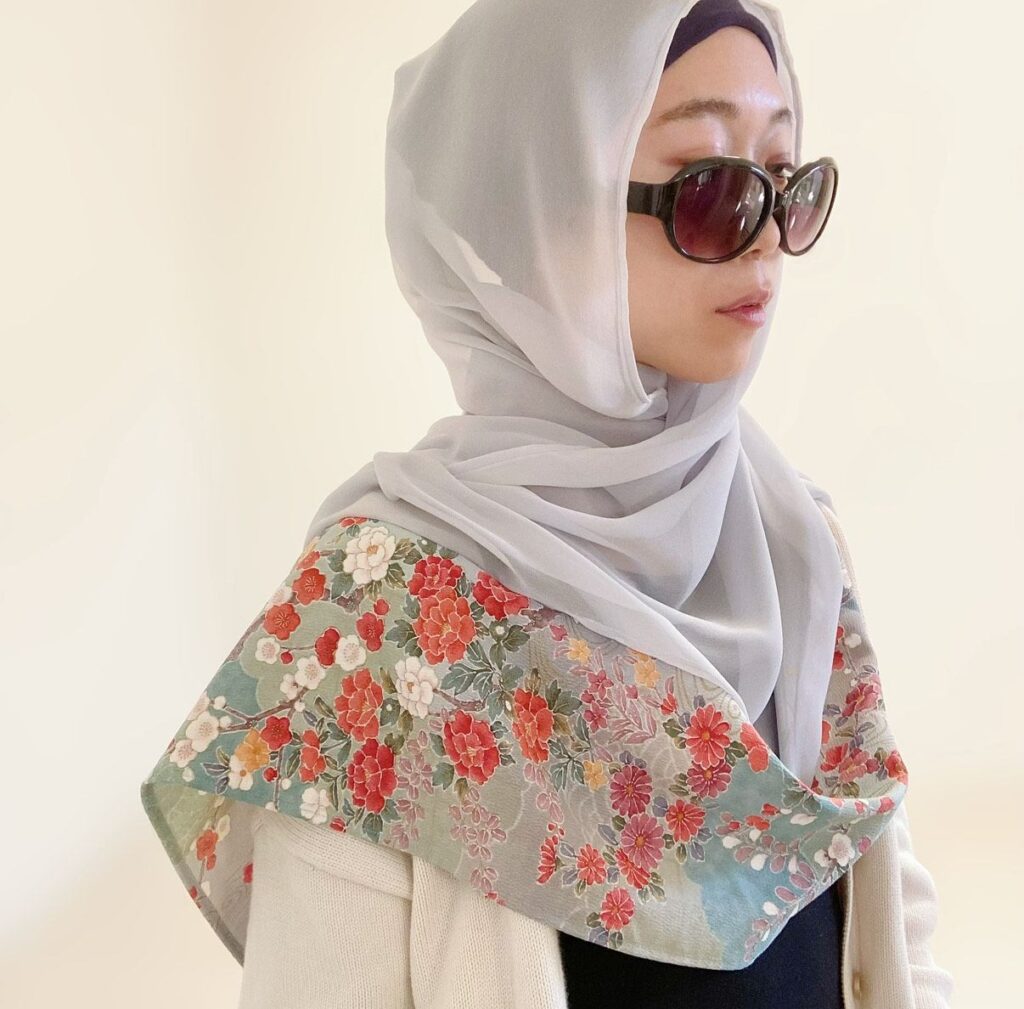JEDDAH: Aiming to represent the complexity of the region’s history, peoples, languages, religions, and ideologies, the Misk Arts Institute launched its first photography and digital art exhibition this week under the title “IMPRINT — Re-Imagining Identity” which will explore the concept of identity in the Gulf Cooperation Council (GCC) region.
The exhibit is at the Prince Faisal Bin Fahad Fine Arts Hall in Riyadh, which opened its doors once again after undergoing restoration.
The exhibition offers a well-designed virtual tour. Virtual visitors are provided with an integrated experience, can smoothly navigate their movement around the hall sections, view all the artworks in detail, and are provided with all the necessary information about the artworks.
The pieces reflect the identity concept, representing the past, present, and future of the land, the cities, and the region’s people. They shift the gaze from the politics, oil wealth, and religion attributed to the Gulf, and offer new and personal narratives instead.
Saudi photographer Bader Awwad Al-Balawi participated with a typology series revolving around balilah kushks (boiled chickpea kiosks) based on the coastline of Saudi Arabia’s eastern region.
They used to sell various kinds of food and drinks but are mainly known for the traditional dish balilah, which is basically a bowl of boiled chickpeas with several types of spices and pickles.
“I used to pass by those balilah kushks daily; they are located in the same line along the coastline in the eastern province, selling the same dish,” Al-Balawi told Arab News.
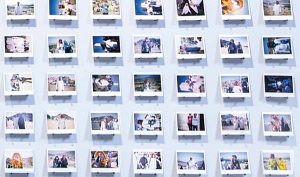
He decided to present the work as a typology, putting 12 photos together. “It was an interesting experiment for me — I wanted to challenge myself to present something common in an artistic way,” Al-Balawi said. “However, I gradually realized how important this project was, especially as these kushks were removed a year later by the municipality, and were replaced by food trucks.”
Their removal meant that, without his images, very little trace that they had ever existed remained.
“It played a very important documentation role and was shortlisted for the Art Jameel Prize” he said. “Koshks are part of our identity, as they used to be part of our weekend activities in the past. I love this project because it represents me personally, as a customer, photographer, and an observer of the changes happening in the region.”
FASTFACTS
• The exhibit is at Prince Faisal Bin Fahad Fine Arts Hall in Riyadh, which opened its doors once again after undergoing a restoration project.
• The exhibition offers a well-designed virtual tour.
• Virtual visitors can smoothly navigate their movement around the hall sections, view all the artworks in detail, and are provided with all the necessary information about the artworks.
The Riyadh-based multidisciplinary artist Ajlan Gharem also participated, with two artworks from his polaroid installation “Mount of Mercy,” a large series of photographs, hidden letters, and personal objects the artist has collected that were left by pilgrims at Mount Arafat during the annual Hajj in Makkah.
The gathering at Mount Arafat is a central ritual of Hajj on the second day of pilgrimage. It is also known as the “Mount of Mercy,” and is where the Prophet Muhammad is said to have given his last sermon.
According to Gharem, hundreds of photographs are left on the ground every Hajj season, or hidden among rocks, some with messages of supplication written on the reverse, some taken during the Hajj, others clearly brought from abroad to be left there.
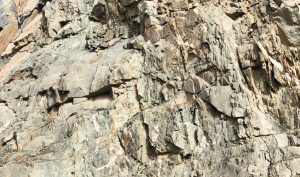
These ritual remnants are regularly collected by Saudi religious police and burned. In preserving these deposited objects, Gharem documented this little talked-about ritual and expanded it into a depiction of collective faith.
In addition to the exhibition, Misk Art Institute also opened the door to amateur artists, and presented 19 works in a dedicated section.
Fay Ibrahim, from Jubail, was one of the selected amateur artists, with two photographs taken of mountains in Najran, in southwestern Saudi Arabia.
“This is my second time participating at an exhibition, and it’s a wonderful experience to see the photos I captured on my mobile hanging on the wall next to other works by different artists,” Ibrahim told Arab News.
Explaining the idea behind her photos, she said: “These huge, beautiful mountains remind me of how we should remain strong and hopeful for this year. They are still standing tall despite the rain, wind, and sandy storms. They remain looking marvelous with all the cracks in between. We should be proud of ourselves remembering that the scars are a part of us and they are what build us, making us who we are.”
She added that it was helpful for local artists to have a platform where they could display their work and establish new relationships with other artists from across the region.
The exhibition curator is Bahraini researcher and writer Latifa Al-Khalifa. She explores Middle Eastern and North African culture, with a focus on the Arabian Gulf.
Those interested in visiting the exhibition can start their virtual tour or book their ticket through the link: https://miskartinstitute.org/exhibitions/imprint The exhibition will continue until Jan. 28, 2021.



